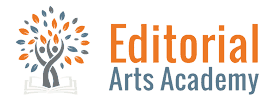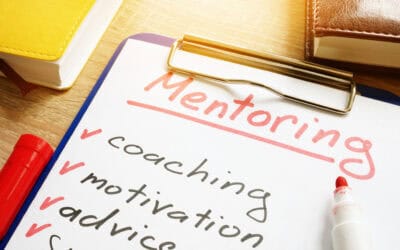
Pat Dobie teaches a comprehensive course on developmental editing for fiction.

Pat Dobie teaches a comprehensive course on developmental editing for fiction.
As a developmental editor of fiction for the last decade, I’ve worked on almost two hundred novels in just about every genre of fiction, both literary and commercial.
By chance, some of the writers I’ve worked with held day jobs as editors in other fields, such as academics or medicine. They knew a lot about fiction from having written a novel, and they knew a lot about editing from having worked in the field. Yet when they talked about developmental editing, they would say things like:
“I could never!”
or:
“I might branch out to copyediting fiction—but not doing all that you do with structure and plot … I’m not ready for that!”
Developmental Editing, Demystified
It’s true that even simple novels are complicated. And it’s true that a well-honed reading sensibility and a solid grounding in the mechanics of storytelling and prose will be extremely useful to any editor of fiction.
But it’s not true that developmental editing requires mastery of the art of fiction. Beginner and intermediate editors can serve fiction writers, too. And you don’t need an MFA in writing or a Ph.D. in literature to be a successful developmental editor of fiction. All the skills you need can be learned through classes like this one.
I believe there has never been a bigger demand for good developmental editors, and over the last decade as an editor and a lifetime as a writer, I’ve learned what works and what doesn’t work—for both me and the writers I work with. I’ve heard horror stories from writers about previous experiences with freelance editors, and I’ve seen just how profoundly life-changing a good developmental edit can be. All this is why I’m working with Editorial Arts Academy to offer this one-of-a-kind course on developmental editing of fiction.
If you’re ready to take the plunge into working with fiction writers, here’s more information about the course.
Developmental Editing for Fiction: A Step-by-Step, Experiential Class
Over the years I have learned how to take a book-length fiction manuscript and unpack its inner workings, guiding the writer how to amplify their story’s strengths, improve its weaknesses, and bring it to a higher level.
In this course, I share:
- the steps involved in analyzing a fiction manuscript at the big-picture level
- the main tools used in a novel’s developmental edit and how to employ them
- the essentials of how to attract and retain the writers you want to work with
This course teaches you how to get under a novel’s hood and see where its story engine is faltering. It gives you resources and basic grounding in literary craft and in the fiction-publishing landscape, so you can give the writer confidence that your opinion means something. And it shows you how to communicate your findings and recommendations in a way that motivates the writer to do better, come back to you with future work, and recommend you to other writers.
The Fiction Writer’s Hope
On the surface, fiction writers work with developmental editors to improve one particular manuscript, usually so they can get an agent and ultimately a publishing contract, or so they can self-publish a novel they’re proud of.
But behind this one manuscript is an entire world of motivations and experiences with the publishing industry—some good, some bad.
We all know that without writers, there is no publishing industry. I don’t think it’s overstating the case to say that a good developmental edit can change a writer’s life for the better, and a bad one can wreak havoc. I’ve worked with writers who’ve almost given up on a novel because of a bad experience with a freelance editor. They’ve said things like:
“I had an editor for the same manuscript several years ago, but I ended up discouraged and put it away.”
Or:
“I paid [another editor] thousands of dollars for a developmental edit but I got a thin-as-dishwater copyedit lite.”
Or:
“They kept my manuscript for a year and when I got it back, they had introduced errors and rewritten whole sections.”
So in this course, I not only cover what to do in a developmental edit of a fiction manuscript, but also go over what not to do.
How This Developmental Editing Course Differs from Others
I believe in “learn by doing.” That’s partly how I learned to developmentally edit fiction myself.
So that you can learn by doing, we use an unpublished novella manuscript to walk through all the steps of a developmental edit. There is no course I’m aware of that takes you through this process step by step, using an entire unpublished manuscript (except possibly for masters programs in publishing that include “editing” as a course offering). I also give you personal feedback on two of the most important elements of the developmental edit: manuscript comments and your editorial letter. Each class ends with a Q&A session, and I’m available on Slack as well.
Course Promise
Developmental Editing for Fiction will give you everything you need to know to hang out your shingle as a developmental editor of fiction.
Developmental Editing for Fiction: Take the Tour
Week 1: Who are Developmental Editors Anyway?
- Lesson 1.1: “The Big Picture”—After introductions, we dive right into who’s hiring freelance developmental editors and where we fit in a fiction writer’s career trajectory. I describe how and why I became a developmental editor, how my business grew, and what types of projects and clients I work with in any given six-month period.
- Lesson 1.2: “What to Expect”—We preview the course, go over what you’re expected to do over the next six weeks, and clarify what kind of feedback you receive.
- Lesson 1.3: “All About You”—Why this course, why now? What do you see as your strengths and weaknesses going in? We talk about the reading sensibility, how much you need to know about the craft of writing fiction, and how to evaluate and begin filling holes in your background.
⇒ Homework: Self-assessment and making space for the coursework
Week 2: The Project & the Tools
- Lesson 2.1: “Meet the Writer”—No developmental edit happens in a vacuum. You “meet” the writer of our working manuscript and learn about their background and career trajectory. You learn how a writer’s experience level can influence each project, and how to create the right offering via an onboarding tool called the sample edit.
- Lesson 2.2: “The Developmental Edit, Unpacked”—We focus on the specific task at hand, the scope of work for a developmental edit, and the difference between it and other types of big-picture feedback—for example, manuscript evaluations.
- Lesson 2.3: “Tools of the Trade”—I introduce manuscript markup, the book map, the editorial letter, and the fourth tool, a follow-up with the writer. I show you examples of the first three and explain why the fourth matters so much.
⇒ Homework: What you need to know before you mark up a writer’s manuscript

Slide from Lesson 2.3, “Tools of the Trade”
Week 3: Capturing Your Reading Experience
- Lesson 3.1: “Active Reading”—We go over what active reading looks like and how to bring your reading sensibility to the fore. I show you how to prepare a manuscript, and how to mark it up with comments that will help you deliver a solid edit.

Slide from Lesson 3.1, “Active Reading”
- Lesson 3.2: “The Big Picture”—We talk about the overlap between developmental and line (stylistic) editing, and how to focus on the big picture.
- Lesson 3.3: “Craft Elements”—Point of View, Characterization, Pacing, and Scene Dynamics. We discuss how to use your fiction reading experience, how to meet the writer on their mat, and where to learn what you need to know about craft.
⇒ Homework: You read the entire manuscript, mark it up electronically with marginal comments, and send it to me for feedback on certain pages
Week 4: Analysis as a Diagnostic Tool

Slide from Lesson 4.1, “The Book Map”
- Lesson 4.1: “The Book Map”—We talk about what a book map is, why you’d want to do one, and how it can help you diagnose issues with the novel’s “story engine.”
- Lesson 4.2: “Craft Elements”—This lesson goes over types of dramatic structure, the purpose of plot, pacing issues, and the role of cause and effect in a story’s engine. We explore how stakes and theme can hone the story’s impact.
- Lesson 4.3: “Book Mapping, Step by Step”—We go through how to create a book map for the novella manuscript, showing you how to unpack the story’s plot, structure, pacing, and other important big-picture elements.
⇒ Homework: You re-read the entire manuscript and create a book map
Week 5: Integrating and Conveying Your Findings
- Lesson 5.1: “The Editorial Letter”—We look at how editorial letters create the gateway to the developmental editing experience for the writer, how to reaffirm the writer’s objectives, and how to prepare them for your feedback.
- Lesson 5.2: “Pre-Writing”—The manuscript markup and book map give you a road map for the editorial letter. We look at how to gather your material, analyze it, and turn it into feedback the writer can absorb.
- Lesson 5.3: “The Letter They Read Aloud”—How to craft a strong editorial letter. The importance of the unvarnished truth. Strengths and weaknesses. Icing on the cake: a revision approach.
⇒ Homework: You write a full editorial letter and send it to me for feedback on certain sections
Week 6: Hanging Out Your Shingle
- Lesson 6.1: “Assess and Integrate”— What have you given the writer of our novella? How do you feel about the experience? We talk about how to home in on your strengths and define who you want to work with, and we look at some additional offerings, like query critiques and editorial coaching.
- Lesson 6.2: “Professionalism and Systems”—We discuss the fundamentals of a solid developmental editing practice and how to build trust with new clients. I describe how to manage expectations and go through the essential systems you will need to give the writer a good experience without burning out.

Slide from Lesson 6.2, “Professionalism and Systems”
- Lesson 6.3: “Next Steps: Back to You”— Advanced skills come with experience, and the sooner you hang out your shingle, the sooner you’ll start getting the experience you need. So we go back to who you are and what you’ve learned, and give you tools to design your trajectory.



